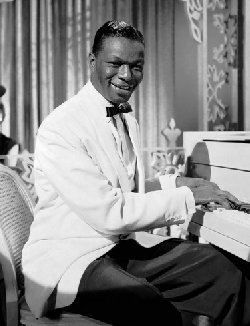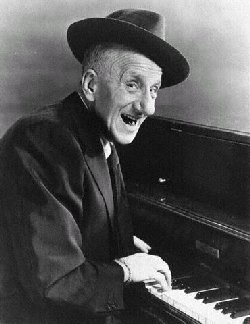- How the rich music of Sinatra, Como, Crosby, Martin, et al is slipping away from us.
Emerging from the Big Band era of the 1930's was the "Crooner," a lead singer who was usually male. Actually, the crooner is the stepchild of both Big Band and the Jazz era. Unlike those eras though, the emphasis was on the singer as opposed to just the sound of the music. These were people with unique voices supported by slick orchestras, and singing the popular songs of the day, primarily the 1940's and 1950's. These were people with magnetic personalities which were derived, in large part, from the types of love songs they sang; people like Bing Crosby, Frank Sinatra, Perry Como, Dean Martin, and Tony Bennett, most of whom are long gone. Interestingly, Sinatra disliked the "Crooner" label and considered himself more of a star. Capitol Records had a keen eye for crooners and developed a stable of singers where they cultivated their image as well as their music.
Two things were interesting about the crooners in general; first, they had more than just a good singing voice, each possessed a unique characteristic which was difficult to duplicate, and songs were specially selected to match them. Second, all were backed by excellent musicians, not just some hacks who knew how to play an instrument. Further, they had the best arrangers such as Nelson Riddle, Gordon Jenkins, Ralph Carmichael, Axel Stordahl, Sy Oliver, Percy Faith, Les Brown, and Billy May.
Perhaps the best music from the crooner era came in the 1950's as audio technology was noticeably enhanced, e.g. "High Fidelity" and "Stereo". The 50's also marked the decline of the crooner which was pushed aside for other musical styles, most notably Rock and Roll. The crooners carried on but interest rapidly declined. Tony Bennett, at age 86, remains the last of the greats. The music is still appreciated and lives on through such artists as Harry Connick, Jr. and Michael Bublé.
Aside from the greats, there were others who made names for themselves as crooners. They are not as well remembered, but their work was excellent and deserves recognition. In particular, three artists come to mind, all of which broke with the stereotype of the crooner.
In an industry dominated by white male singers, Nat King Cole broke the color barrier, particularly in television in the 1950's where he hosted a variety show. Cole began as an accomplished jazz pianist, but his deep voice led him to the microphone. He was a chain smoker, consuming three packs of Kool cigarettes a day under the belief it helped him tune his rich voice. Eventually, he succumbed to lung cancer as a result. Even though his music lives on, thanks in large part to his daughter, Natalie Cole, most young people are unfamiliar with his name. They may have heard his songs in movies and on the radio, particularly this time of year where "The Christmas Song" is routinely played, but they really do not know who he is.
Cole's best crooning work includes such greats as "Ramblin Rose," "Mona Lisa," "Unforgettable," "The Very Thought of You," "Almost Like Being in Love," and the legendary "Stardust" (arguably one of the best renditions of this famous song). Another personal favorite of mine is his "Route 66" which is more of a jazz piece.
Lee certainly earned the recognition of "Crooner" even though she was obviously not one of the boys. Yet, she possessed a smokey purr which was unlike any other female singer, and she tackled the same sort of arrangements the boys did. She was active on the nightclub and concert circuit for years and worked up until near her death in 2002. She began as a singer for Benny Goodman's orchestra and forged a sophisticated personality essentially no different than Sinatra or Martin; she was a singer's singer and everyone loved her for it. Although her name is fading away, her music certainly isn't. Just about every young person is familiar with her signature song, "Fever." Her classic, "Is That All There Is?," is a personal favorite and demonstrates her on-air magnetism. Other hits include "I Don't Know Enough About You," and "It's a Good Day." She is said to be a mentor figure for such musical greats as Judy Garland, Frank Sinatra, Paul McCartney, Bette Midler, Madonna, and Dusty Springfield.
Durante was an unusual character and undoubtedly forgotten by many people (he passed away back in 1980). Whereas the great crooners were handsome men, the old "Schnozzola" (as he was called for his sizable nose) was relatively short and balding. Yet, he had a magnetic personality with a gravely voice unlike everyone else thus mentioned. He was primarily known as a comedian who played a ragtime jazz piano. Durante was one of those rare entertainers who was successful in Vaudeville, radio, television, and movies. His nightclub act was often considered raucous and bawdy. His first jazz hit was "Inka Dinka Doo" which became his signature song, but this was considered lighthearted music that certainly wouldn't cause a woman to swoon. His serious work came in the late 1950's and early 60's as the music technology improved. Even though Durante was advancing in years and possessed a coarse voice, his arrangers helped him produce a string of hits still familiar to a lot of people, including: "Young at Heart," "As Time Goes By," "Make Someone Happy," "I'll Be Seeing You," and "Smile." These were all proven songs made famous by other artists, but Durante's rendition is perhaps more memorable.
Although I wish singers like Harry Connick, Jr. and Michael Bublé much success, and that others join them, we must realize we have witnessed the passing of an era of some very rich music. The singers today may have some fine voices, but none with the unusual sounds the crooners gave us, coupled with fine orchestrations behind them. We may not know the songs of today, but we certainly remember those the crooners gave us, both those artists with recognized names and those quickly fading from our view.
"Good night, Mrs. Calabash, wherever you are."
Keep the Faith!
Note: All trademarks both marked and unmarked belong to their respective companies.
 Tim Bryce is a writer and the Managing Director of M&JB Investment Company (M&JB) of Palm Harbor, Florida and has over 30 years of experience in the management consulting field. He can be reached at timb001@phmainstreet.com
Tim Bryce is a writer and the Managing Director of M&JB Investment Company (M&JB) of Palm Harbor, Florida and has over 30 years of experience in the management consulting field. He can be reached at timb001@phmainstreet.com
For Tim's columns, see:
timbryce.com
Like the article? TELL A FRIEND.
Copyright © 2012 by Tim Bryce. All rights reserved.
NEXT UP: WHAT IS BUSINESS? - Sounds like an innocent question, but do we have a consensus understanding?
Listen to Tim on WJTN-AM (News Talk 1240) "The Town Square" with host John Siggins (Mondays, Wednesdays, Fridays, (12:30-3:00pm).
Also look for Tim's postings in the Palm Harbor Patch, The Gentlemen's Association, and throughout the Internet.



No comments:
Post a Comment